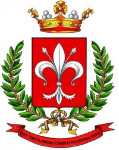Porta Casamari
Ultimo aggiornamento: 23 ottobre 2023, 11:57
Porta Casamari
Chiamata anche Porta Maggiore, è il più probabile punto d'approdo del decumano massimo, che attraversava il foro e la collegava in epoca Imperiale con l'attuale Porta S. Agata.
Risale alle opere di miglioramento delle fortificazioni del tempo di Silla (II/I sec. a.C.) e realizza un sistema difensivo che si erge tutt'oggi in grande altezza, composto da torrioni laterali (ora perduti), la fortificazione dello ierone (contrafforte del XV sec. circa), una salita in forte pendenza e una doppia porta con propugnaculum (camera per intrappolare gli assalitori).
Come altre porte in città, è orientata a sinistra (porta scea): per via di un muro appositamente angolato, i soldati disposti sulle mura potevano affrontare i nemici dal fianco destro, più frequentemente scoperto considerato che lo scudo era di norma ancorato al braccio sinistro.
Il sistema era completato dalla gemella Porta di S. Croce e dalla porta di sortita (uscita nascosta per attacchi alle spalle) detta oggi Grottapara. La cinta muraria è stata riparata e potenziata più volte, segno della necessità di tenere in funzione la struttura nelle varie epoche, per il suo ruolo di controllo delle terre verso Sud.
L'usanza del nome Casamari si riferisce all’orientamento verso l'Abbazia Cistercense, ed entrò nell’uso comune per via del continuo transito dalla vicina chiesa di Santa Maria Maggiore ed annessa Grangia.
ENG Called Porta Maggiore, it is the most probable landing point of the decumanus maximus, which crossed the forum in the Imperial era and connected it with the current S. Agata Gate.
Dating back to the improvements led by Silla (2nd to 1st century BC), it is the key point of a defensive system that still stands very tall today: probably it featured lateral towers (now lost), the fortification of the buttress (called ierone, built in the 15th century circa), a steep slope and a double door with a propugnaculum (chamber to trap attackers).
Like other gates in the city, it is oriented to the left (porta scea) through a purposedly angled wall, so that the enemies would find themselves with their uncovered side facing the defenders arranged on the walls – considering that the shield was normally on their left arm.
The defensive system involved its twin gate - the nearby Porta di S. Croce - and the secret exit gate known today as Grottapara. The walls have been repaired and strengthened several times, a sign that - in all historical phases - the City has kept the structure in operation to control the lands towards South.
The custom of the name Casamari refers to the road that leads to the Cistercian Abbey, and arose in common language due to the intensive trades of the nearby church of Santa Maria Maggiore, with its Grangia (lit. agricultural community).

